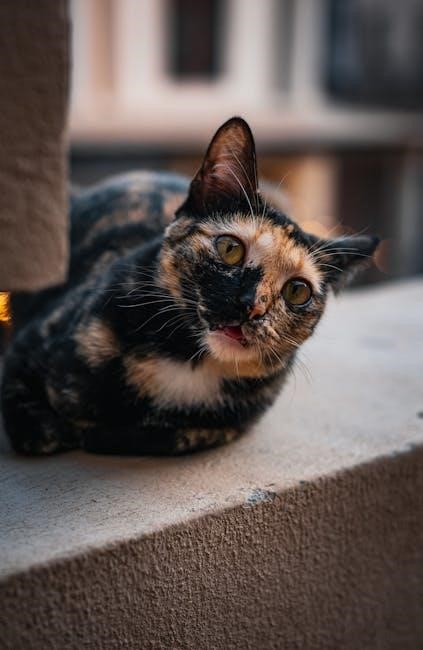Overview of the IICRC S500 Standard
The IICRC S500 Standard is a comprehensive guide for professional water damage restoration, detailing procedures, precautions, and key terminology to ensure effective and safe restoration practices.
The IICRC S500 Standard is the gold standard for professional water damage restoration, developed by the American National Standards Institute (ANSI). It provides detailed procedures, safety measures, and terminology for restoring water-damaged residential, commercial, and institutional properties. This document ensures that restoration practices are consistent, effective, and safe, while addressing the unique challenges of water damage. Compliance with the S500 Standard is essential for professionals to meet industry expectations and deliver high-quality services.
Key Definitions and Terminology
The IICRC S500 Standard defines critical terms to ensure clarity and consistency in water damage restoration. Key definitions include “shall,” “should,” and “recommend,” which denote levels of necessity. Categories of water (e.g., clean, gray, black) and classes of damage are detailed to guide assessment and treatment. Terms like “remediation” and “restorer” are clearly explained to establish professional standards. These definitions provide a common language for industry professionals, ensuring effective communication and uniform practices across restoration projects. Understanding this terminology is essential for compliance and proper implementation of the standard.
Development and Update Process
The IICRC S500 Standard undergoes collaborative development, with public reviews and updates ensuring it remains current and effective for water damage restoration practices.
ANSI/IICRC S500 Revision History
The ANSI/IICRC S500 Standard has undergone several revisions since its introduction, with the 2021 edition being the most recent. This update incorporated feedback from industry professionals and addressed over 200 comments during public reviews. The standard is developed collaboratively, ensuring it reflects current best practices in water damage restoration. Each revision aims to enhance clarity, safety, and effectiveness, making it a trusted guide for professionals. The latest edition is available in print, PDF, or subscription formats, ensuring accessibility for all industry stakeholders.
Public Review and Comment Process
The ANSI/IICRC S500 Standard undergoes a rigorous public review and comment process to ensure transparency and industry consensus. This process involves multiple rounds of public feedback, with stakeholders submitting comments that are carefully reviewed and addressed. For instance, the 2015 revision included over 2030 comments from 359 contributors, reflecting broad industry input. This collaborative approach ensures the standard remains relevant and effective, addressing emerging trends and challenges in water damage restoration. The process is open to all interested parties, fostering a balanced and inclusive development cycle.

Key Components of the IICRC S500 Standard
The IICRC S500 Standard outlines procedures for water damage restoration, safety measures, and key definitions, ensuring a structured approach to restoration practices and terminology.
Procedures for Water Damage Restoration
The IICRC S500 Standard outlines detailed procedures for water damage restoration, including assessment, drying, and microbial control. It emphasizes evidence-based approaches to ensure structural integrity and safety. The standard provides guidelines for evaluating water damage categories, selecting appropriate drying methods, and documenting progress. Additionally, it addresses containment and removal of contaminated materials to prevent further damage. These procedures are designed to minimize risks and ensure effective restoration outcomes, aligning with industry best practices and safety protocols. Adherence to these guidelines is crucial for professionals in the field.
Precautions and Safety Measures
The IICRC S500 Standard emphasizes critical safety measures to protect both restoration professionals and occupants. It outlines the use of personal protective equipment (PPE) and hazard control practices to minimize exposure to contaminants. The standard also addresses proper containment methods to prevent cross-contamination and ensures safe handling of damaged materials. Additionally, it stresses the importance of electrical safety, ventilation, and proper documentation of safety protocols. Adherence to these precautions is essential to ensure a safe and effective restoration process, reducing risks and potential liabilities for all parties involved.

Industry Importance and Recognition
The IICRC S500 Standard is widely recognized as the benchmark for water damage restoration, developed by the Institute of Inspection, Cleaning and Restoration Certification (IICRC), an ANSI-accredited standards developer.
Role of IICRC in the Restoration Industry
The Institute of Inspection, Cleaning and Restoration Certification (IICRC) plays a pivotal role in the restoration industry by developing and maintaining standards like the S500. As an ANSI-accredited standards developer, the IICRC ensures that professionals follow best practices for water damage restoration. The organization provides training and certification programs, such as WRT and ASD, which are foundational to the industry. By fostering consistency and excellence, the IICRC enhances credibility and trust among restoration professionals, insurers, and property owners, making it a cornerstone of the industry’s growth and professionalism.
Compliance and Certification Requirements
Compliance with the IICRC S500 Standard is essential for professionals in water damage restoration to ensure safe and effective practices. Certification programs, such as WRT (Water Damage Restoration Technician), are based on the S500 guidelines and validate expertise in restoring water-damaged properties. Professionals must adhere to these standards to maintain industry credibility and meet legal requirements. Regular updates to the S500 ensure that certifications remain relevant and aligned with best practices, making ongoing education and recertification crucial for staying compliant and competent in the field.

Accessing the IICRC S500 PDF
The IICRC S500 PDF is available for purchase through official channels, including print, digital, or subscription options. It can be bought directly from the IICRC store or authorized resellers. The standard is priced at approximately 4200 RUB for the English version, with delivery typically within one working day. A subscription provides access to updates and revisions. While free downloads are not officially endorsed, some platforms may offer previews or summaries. Always ensure compliance by obtaining the document from reputable sources to avoid unauthorized versions.
Official Purchase Options (Print, PDF, Subscription)
The IICRC S500 Standard can be purchased in three formats: print, PDF, or subscription. The print version is ideal for physical reference, while the PDF offers digital accessibility. Subscriptions provide ongoing access to updates and revisions, ensuring compliance with the latest standards. Prices vary, with the PDF available for approximately 4200 RUB. Bulk pricing tiers are available for organizations purchasing multiple copies. The standard can be bought directly from the IICRC store or through authorized resellers. Subscription options enhance convenience for professionals requiring up-to-date information.
Free Download Options and Considerations
While some websites may offer free downloads of the IICRC S500 Standard, these sources are often unreliable or illegal. The official PDF is available for purchase through the IICRC store or authorized resellers. Free versions may lack critical updates or contain errors, potentially leading to non-compliance with industry standards. For professional use, purchasing the official document ensures accuracy, legality, and access to the latest revisions; Always verify the source to avoid unauthorized copies and maintain the integrity of your restoration practices.
Updates and Revisions
The IICRC S500 Standard undergoes regular revisions to reflect industry advancements. The 2021 edition introduced enhanced procedures and safety measures, ensuring alignment with current best practices.
Latest Edition (2021) and Its Enhancements
The 2021 edition of the IICRC S500 Standard introduces significant updates, enhancing procedures for water damage restoration. It incorporates advanced safety protocols, improved terminology clarity, and streamlined processes for residential, commercial, and institutional settings. The revised standard aligns with current industry practices and technological advancements, ensuring restorers can address complex water damage scenarios effectively. The 2021 edition is presented as a combined Standard and Reference Guide, offering comprehensive guidance. It is available in PDF format, making it accessible for professionals worldwide. This update reflects the IICRC’s commitment to maintaining the highest restoration standards.
Future Revisions and Industry Impact
The IICRC S500 Standard is expected to undergo future revisions, with updates addressing emerging technologies and industry advancements. The new Consensus Body is already working on revisions, aiming to release the next edition within 12-18 months. These updates will likely focus on enhancing safety protocols, clarifying terminology, and incorporating new restoration techniques. As the standard evolves, it will continue to shape industry practices, influencing certifications, training programs, and operational guidelines. Staying informed about these revisions will be crucial for professionals to maintain compliance and deliver high-quality restoration services.

Practical Applications
The IICRC S500 Standard provides detailed procedures and guidelines for water damage restoration, serving as a critical reference for technicians and professionals in the field.
Case Studies and Real-World Examples
Real-world examples demonstrate the IICRC S500 Standard’s practical application in water damage restoration. For instance, companies like 877Quic-Dry adopt these guidelines to ensure safe and effective restoration processes. Case studies highlight how adherence to the standard reduces liability and improves outcomes. The 2021 edition’s separation of the standard and reference guide enhances clarity, aiding professionals in complex scenarios. These examples underscore the importance of following established protocols for successful restoration projects.
Best Practices for Implementation
Effective implementation of the IICRC S500 Standard requires adherence to established protocols for water damage restoration. Professionals should conduct thorough assessments, document progress, and use appropriate equipment. Safety measures, such as personal protective equipment (PPE) and containment strategies, are essential. Regular training and certification ensure compliance with the standard’s guidelines. By following these best practices, restoration teams can mitigate risks, ensure effective restoration, and maintain industry standards. Proper documentation and communication with clients further enhance the process.
Compliance and Legal Considerations
The IICRC S500 Standard ensures compliance with industry regulations, reducing liability risks. Adherence to its guidelines is often mandated by laws and insurance requirements, ensuring legal and safety standards are met.
Standards and Regulations in Water Damage Restoration
The IICRC S500 Standard establishes guidelines for water damage restoration, ensuring compliance with industry best practices. It incorporates ANSI-accredited protocols, making it a benchmark for legal and safety standards. The standard defines procedures, terminology, and precautions to mitigate risks and ensure effective restoration. Adherence to these guidelines helps reduce liability and ensures practices align with regulatory requirements. While the standard is comprehensive, it may require supplementation with local or regional regulations to address specific legal or environmental concerns.
Liability and Risk Management
Adhering to the IICRC S500 Standard minimizes liability and manages risks in water damage restoration. By following established protocols, professionals ensure compliance with industry best practices, reducing legal exposure. The standard provides clear guidelines to avoid negligence claims and ensures safe restoration processes. Proper documentation of procedures, as outlined in the standard, serves as evidence of due diligence, protecting firms from potential litigation. Non-compliance can lead to increased liability, making adherence crucial for risk mitigation and maintaining professional integrity.
Resources and Further Reading
The IICRC S500 PDF is complemented by related standards like S520 for mold remediation, training programs, and additional ANSI resources for comprehensive industry knowledge.
Related IICRC Standards and Documents
The IICRC S500 Standard is part of a suite of documents that include S520 for mold remediation and other ANSI/IICRC standards. These resources provide a comprehensive framework for professionals in water damage restoration, ensuring consistency and best practices across related fields. Additionally, the IICRC offers training materials, certification programs, and reference guides that complement the S500, aiding in its implementation and understanding within the industry.
Training and Certification Programs
The IICRC offers various training and certification programs, including Water Damage Restoration Technician (WRT) and Applied Structural Drying (ASD), which are based on the S500 Standard. These programs provide professionals with the knowledge and skills needed to effectively restore water-damaged properties. Certification requires passing exams that test understanding of the S500 guidelines. The S500 PDF is a key resource for study and reference, ensuring technicians are well-prepared to meet industry standards and best practices in water damage restoration.